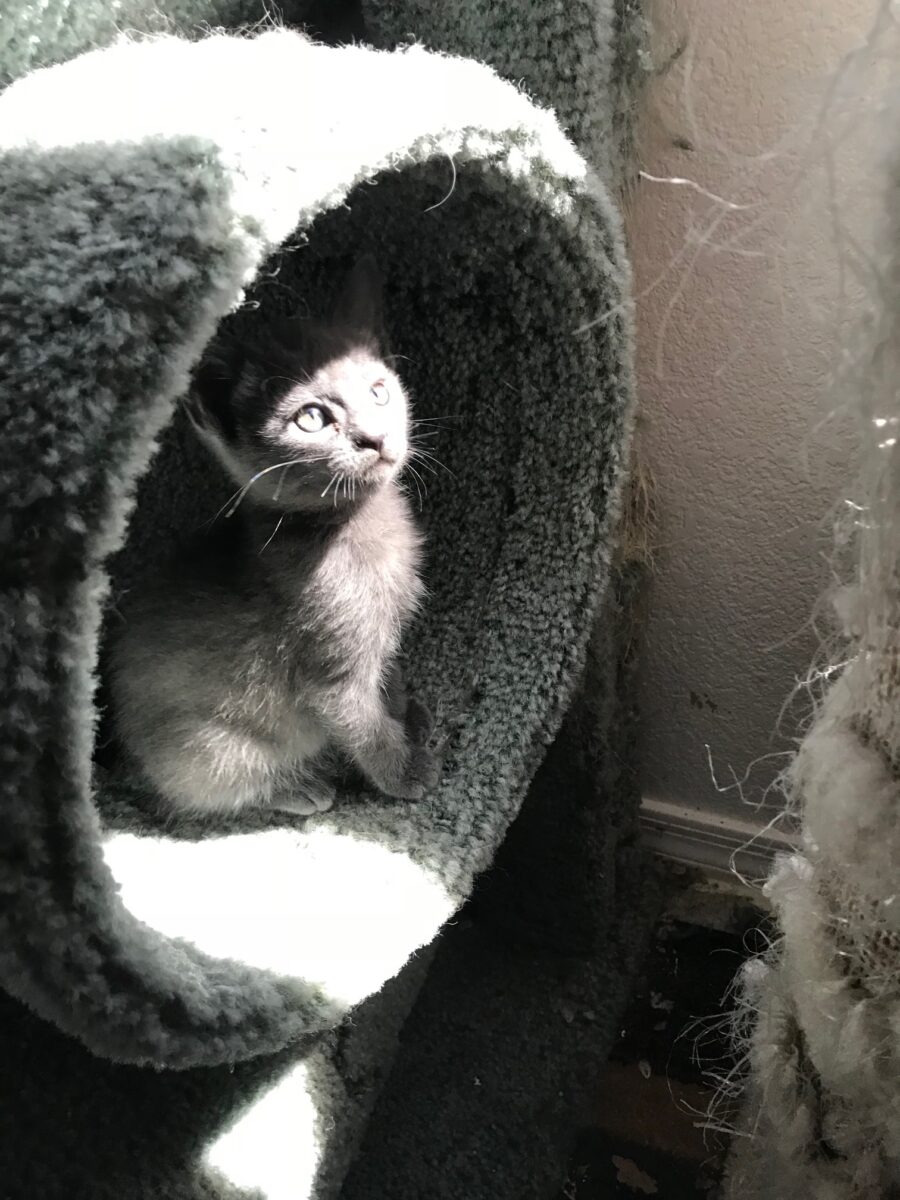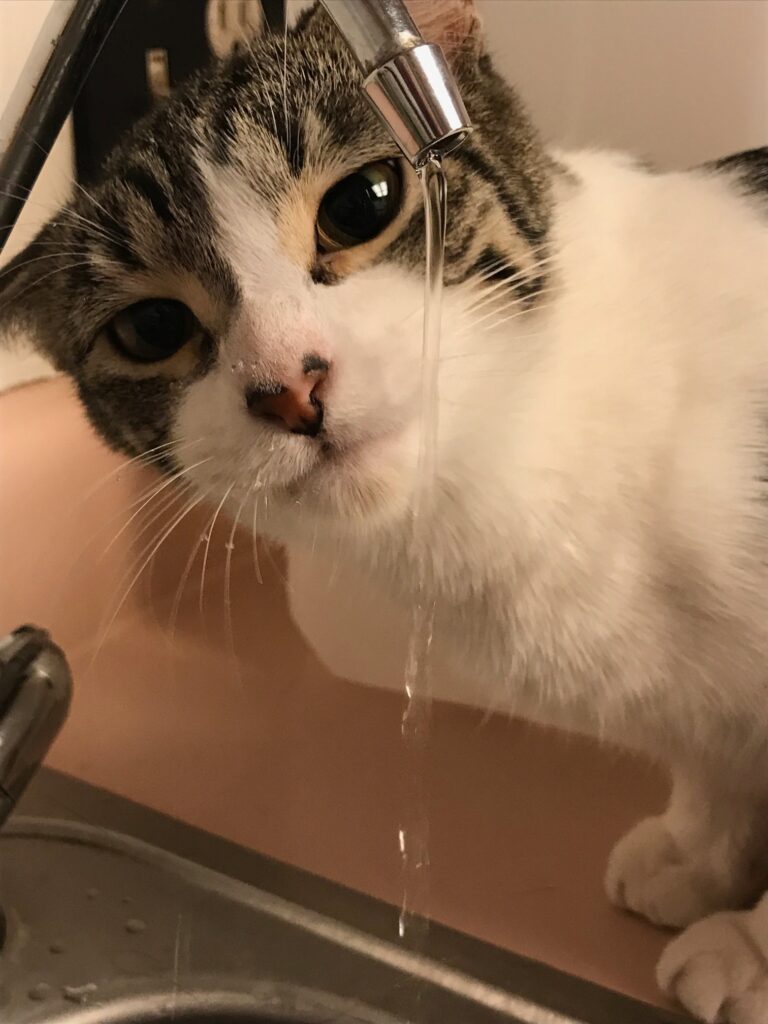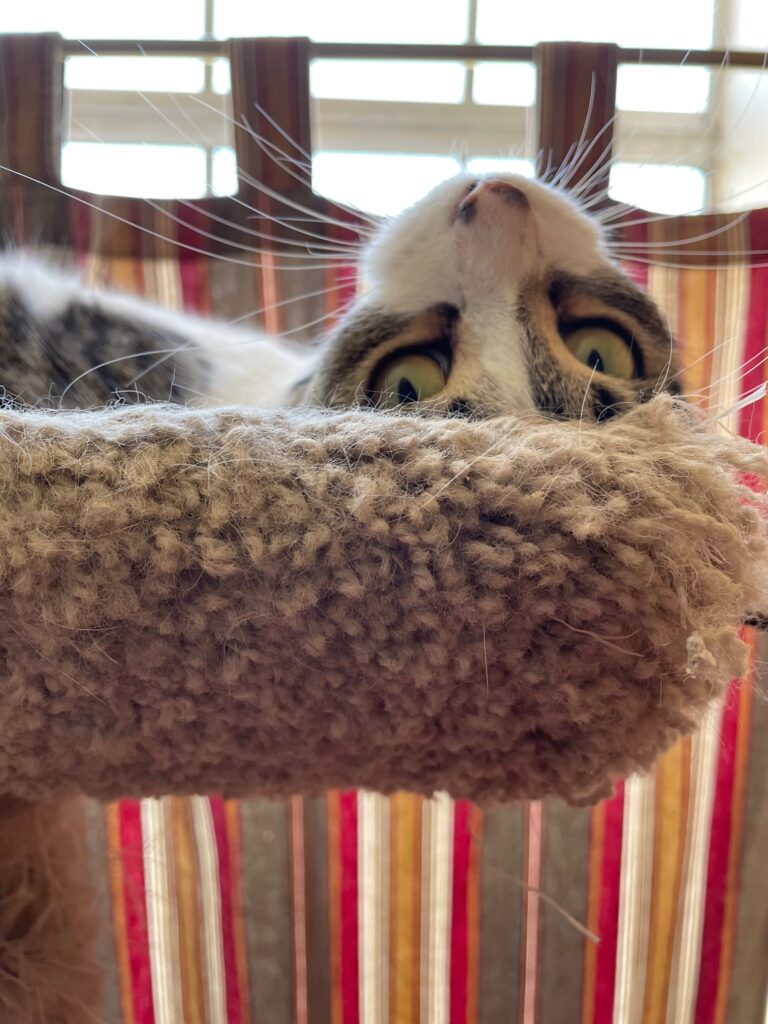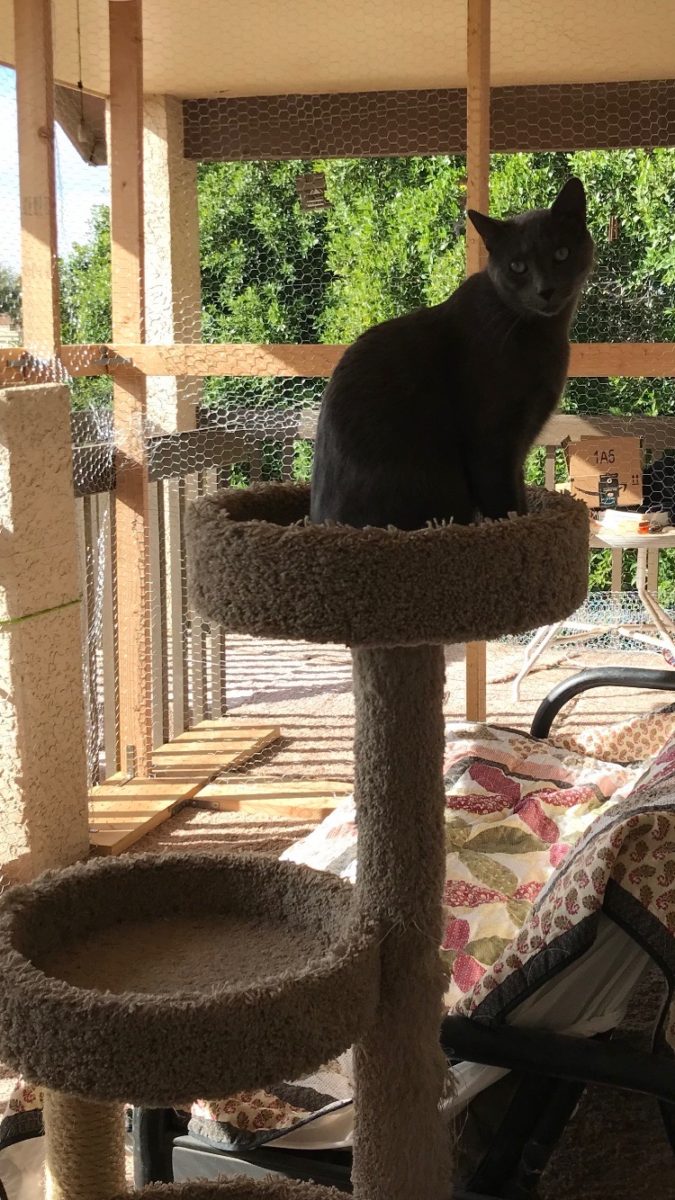New Kitty Introduction Strategies
*This post may contain affiliate links for which I earn commissions.*
AWESOME! You decided to get a new kitty and need help with properly introducing them to your home, family, friends, and possibly other pets.
We have helped dozens of new cat owners with this exact process. The strategies that I will discuss here will work almost 100% of the time if you follow them exactly. The absolute most important rule to remember is that it’s easier and faster to go too slow with the introduction versus going to fast and then have to undo, redo, and retrain which may or may not work and will most definitely take longer.
Although we have had a very high percentage of success with bringing in new cats or kittens to our home and have had massive success training other cat adopters, there are still folks who think they know better or try short cuts that end up causing major problems and at times ruin that particular adoption. We always tell new cat owners that the introduction process can take a few hours, a few days, or a few weeks. It will work. but the cat sets the pace. You must be PATIENT!

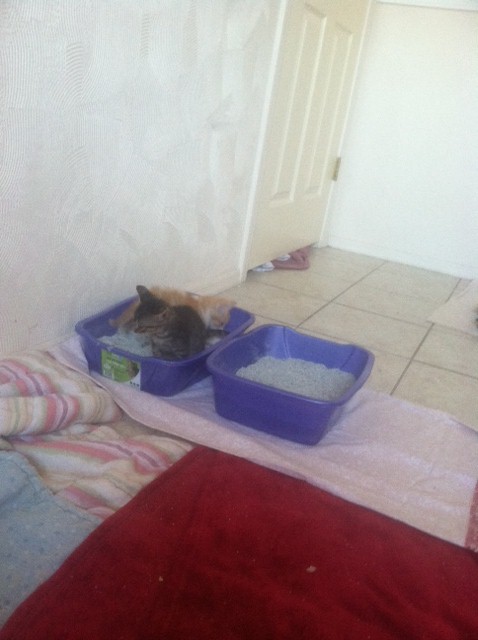
We have NEVER had a cat/kitten introduction process fail if the following steps are followed exactly. This will work 100% of the time. The only unknown is how long it will take. Each scenario is different so it takes as long as it takes. We had one young cat take six months!

- Step One- is to have a safe, catproof, separated room to start
- Step Two- is for the new cat to have at least ONE human they are very comfortable with
- Step Three- if you have other pets you must follow pet intro protocol first
- Step Four- if there are no other pets, then you can proceed to rest of house intro
This article will focus primarily on step one with some overall strategies. There will be a series of articles with an entire article devoted to each step. Keep in mind that your biggest challenge here will be fear. Your new kitty will have at least some fear if not quite a bit. Your current pets will probably have some fear, but maybe not. And the humans involved in the introduction process may also have some fear. This fear could center around concern that something will go wrong, the humans may make mistakes, the cats may not get along, the dog may act up, or this whole introduction thing may not work.
One of the strongest and most helpful results of following the steps we are discussing is that one of the primary goals of the process is to greatly reduce the fear factor or help to eliminate it all together. You know your current pets and should be able to read and judge their reactions to new situations. The new kitty may be a bit of a mystery early on, but Step two of the introduction process will help you be able to read them as well. Hopefully, the humans involved will read these articles and they will help provide confidence and alleviate fear. If for some reason you have a friend or family member who seems anxious or just has a higher level of stress, activity, etc., then this person may need to NOT be involved in the introduction process. They should avoid the introduction steps early on and perhaps get involved later or after the new pet has completed all the steps.
The first step is to find a room that the new kitty can be isolated in for a bit. A spare bedroom/guest room works well. A den, extra bathroom (large) or enclosed porch, patio, sunroom weather permitting can work too. The goal here is to have the new kitty feel very comfortable in this room. This will be their “safe zone” as they proceed with the other introduction steps. I can’t stress enough how important this step is. Your new kitten MUST feel comfortable in “their” room BEFORE they can make any progress with humans, other pets, or the rest of the house.
The most common mistake people make is to bring home the new cat or kitten and just let them loose to the entire house right away. The cat is usually scared and overwhelmed and will hide virtually anywhere. Often they will hide in a spot that does not allow much observation or interaction. Now the humans get impatient, frustrated, or concerned. This can easily lead to a host of more difficult issues, than if they would simply put them in an extra room to start off in first. If there are other pets in the house it can make this situation much worse.
I am going to angle this post towards a new kitten. Some items can be a little easier with a new kitten, but others can be more difficult or even dangerous. If you cover all the bases for a kitten and your new furbaby happens to be an older cat you won’t miss anything important.

The selected room should be fairly quiet if possible. We typically have a radio in the room set to a talk radio station with the volume medium low. This provides a steady white noise, background type of atmosphere that helps dilute noise from the rest of the house or even outside the house. The constant sound of voices also seems to help the cat get used to human voices in general. Background music like jazz or something calm and relaxing is also a nice option. We have had a lot of success with this technique and still use it today especially during New Years Eve and July 4th fireworks.
You will need to make sure and kitten/cat proof the room. NO STRINGS! Look for anything with strings in the room. The most common would be the window mini-blinds with the long strings. These can be very dangerous. The loose strings need to be secured. You might try a hook on the wall up high out of reach. I would recommend having the blinds pulled up quite a bit with the extra strings on the side wrapped up on a high hook. You also have to watch out for cat toys with strings. We have them put away in a safe place when we are not playing with our cats. We NEVER leave these types of strings toys just laying around unattended. Kittens in particular can strangle themselves on strings or possibly eat and digest them which can lead to severe health problems or even death.
Other items to look out for would be houseplants, potpourri, candles, plastic bags of any kind, plug-in fragrance devices, any chemicals, and be mindful of electrical cords for lights, computers, etc. many houseplants are poisonous for cats, and several will make them very ill. It’s best to remove all of them at the beginning and do research to come up with a plan for them later. Cats are very drawn towards plants and the dirt they are in. Cats and kittens are very curious in general and they will want to explore and check out pretty much everything in their surroundings at some point.

It’s very helpful to go in the room you are going to use and just sit and lay on the floor. Look around. What do you see. This is the perspective your new kitty will be seeing the room in. You want to look for holes, boxes, areas behind or under furniture where the cat or kitten might try to squeeze into. Now not every hole is a potential problem, but some could be. What you want to try and avoid is having the new kitten be able to hide somewhere that is very difficult or impossible for you to at least see them. A good example of this is under the bed. That is where they will most likely go to first. I don’t mind if they are under the bed, but I really don’t want them especially if it’s a little kitten to be way up under the headboard part of the bed where I can’t see them to monitor how they are doing.
To help prevent this we will cram boxes and or old blankets under the bed towards the headboard so they can’t get all the way up there. Now if they are under the bed we can still see them if we look under there. The reason they will usually go under the bed right away is so they can hide and feel safer while they sort out everything in their new world. Before they arrive we will set up a couple of boxes or maybe a laundry basket on their sides with the open part facing away from the door. There will be soft blankets, towels, or sheets laying inside to make the space as inviting as possible. This way the cat feels like they have a safe hiding place, but we can still observe and check on them when needed. This technique also helps redirect them from undesirable hiding places in exchange for something nicer and easier for us to work with. The goal is to be able to at least see and observe the cat while they are getting adjusted to their new temporary room. If they are able to hide away somewhere that is very difficult or impossible to view them, then it becomes much more difficult to monitor their progress. It’s not impossible if you start with them really hiding away from view, but it can be more challenging and perhaps take a bit longer to progress.
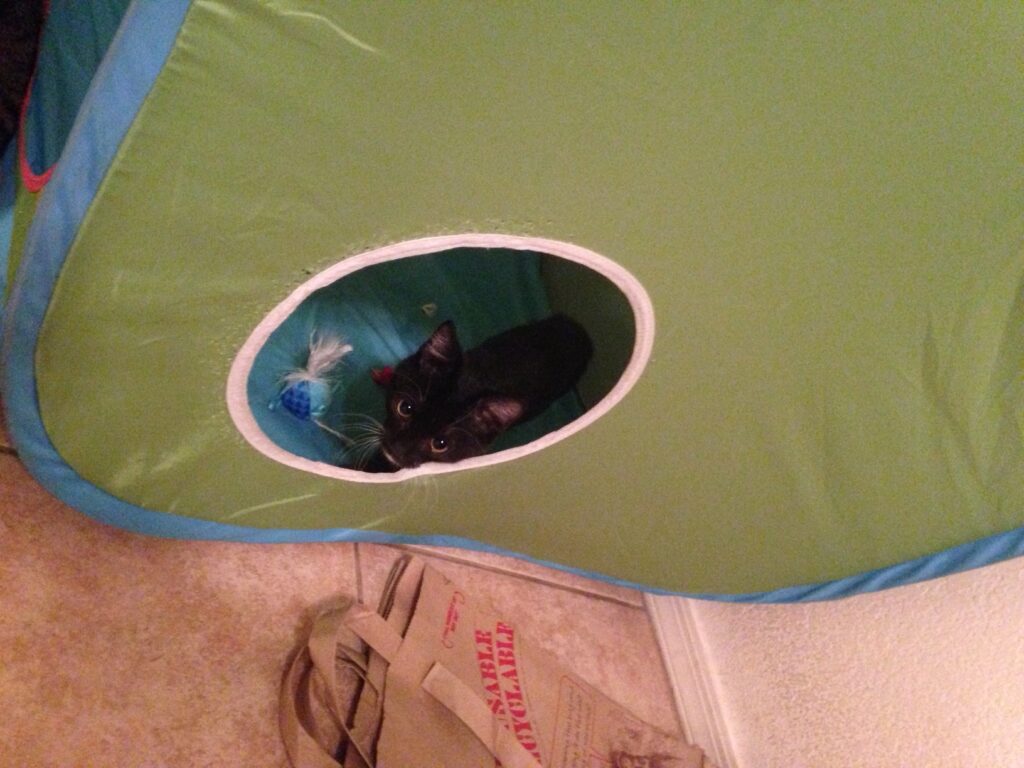
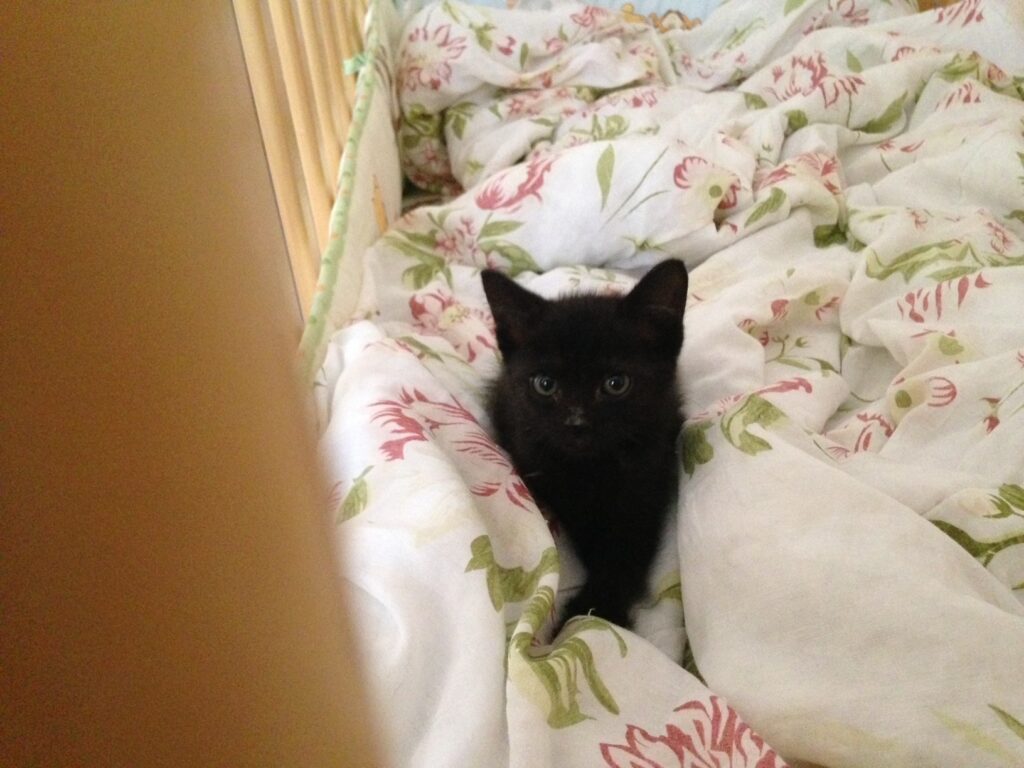
You will also have to set up their food water and litterbox. The food and water can’t be near the litterbox. We don’t eat in our bathrooms and cats don’t either. All three of these items will need to be away from the door. Initially, the scariest part of the new room will be when the door opens. If the food, water, or litterbox are near the door this may discourage their use.
If you have a box on its side preferably in a far corner, then food and water cold go there. The litter box could go in any other corner, but not near the door. We always free feed and cats should always have access to clean, fresh water. Litterbox should be cleaned daily to ensure use. You want everything to be as easy and calming as possible to try and get off to a great start with your new kitty.
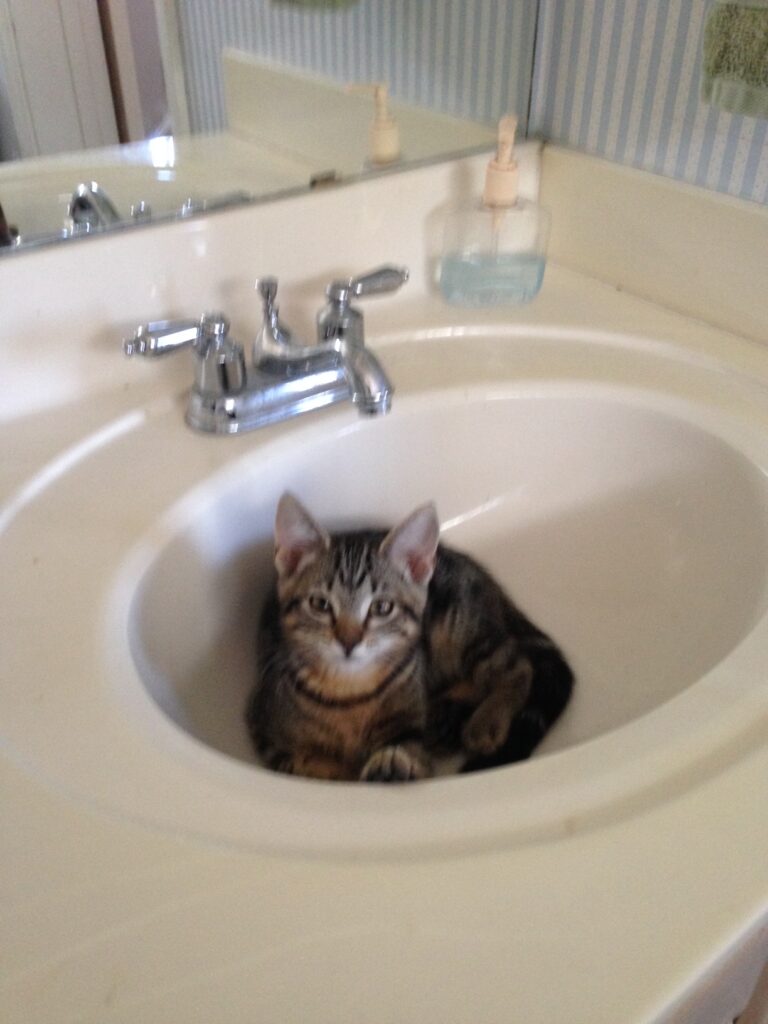
I hope you found this article helpful. The key is slow and easy. Next we will discuss how to get your new cat comfortable with you.

